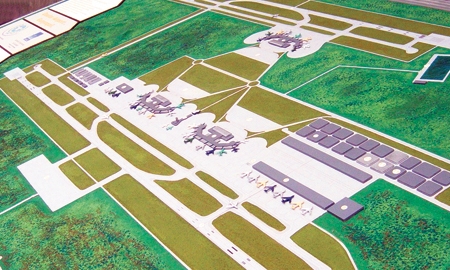In 2000 the federal government handed over to the City of Guayaquil the responsibility of running the airport along with some land. Consequently, Mayor Jaime Nebot created the Guayaquil Airport Authority to oversee it, but he was also clear about the need to put the airport’s administration in private hands so as to maximize efficiency.
It took just 17 months to build a terminal that has been named three times best airport in Latin America, and the best airport in the world (category: under 5 million passengers per year) in 2011, and second in 2012 by the Global Airport Council. José Joaquín Olmedo Airport, in remembrance of the city’s first mayor, opened doors in 2006 and Argentinean firm Corporación América won the right to operate the airport until 2024.
As the city has grown rapidly in the last five years, business and tourism demands have done the same, increasing the airport traffic at a strong pace. Nicolás Romero, General Manager of the Guayaquil Airport Authority (AAG), says that the traffic growth on the new terminal has risen 5% year-on-year on international routes, and 12% on domestic flights. This led to the AAG’s decision to enlarge the national pre-boarding area by nearly 50% and expand boarding bridges, thus enhancing airport capacity by some 30%.
Guayaquil’s airport sees some 70,000 flights every year. The AAG has cut rates for domestic flights in order to incentivize regional traffic and national tourism, and boost the municipality’s economic development as the gateway to the region.
“Right now we’re working on a strategic analysis for the existing airport to understand just how long we can stay here and to define a timeframe for the move to Daular”
“back in the day, people used to talk about a city’s airport; today we think about airport cities”
Nicolás Romero,
General Manager of the
Guayaquil Airport Authority |
Despite expansion plans, passenger traffic in the not too distant future will outgrow the Jose Joaquin de Olmedo Airport’s potential of 8.5 million passengers – hence the proposal to begin construction in 2019 on a new airport in Daular.
“We know that traffic will keep growing at a strong pace, and that is why have more than three years’ worth of studies towards the construction of a new city airport,” says Mr. Romero, adding that U.S. consultancy firm LeighFisher has headed up the master plan for the 4,900-acre site some 23 miles outside Guayaquil proper.
“Right now we’re working on a strategic analysis for the existing airport to understand just how long we can stay here and to define a timeframe for the move to Daular,” adds Mr. Romero.
What will the Daular airport offer, apart from more space, that the current airport doesn’t? According to the General Manager there will be three parallel runways, something only six existing airports in the world can boast (all in the U.S.). And aeronavigation studies have shown that weather conditions at Daular will allow flights to take off and land 99.75% of the time. Moreover, Mr. Romero says that aside from being a state-of-the-art terminal, it will also be “100% ecological”.
Building a new terminal from scratch allows for more ideas to be turned into reality. With a planned capacity that should satisfy Guayaquil’s needs well into the latter half of the 21st century, Mr. Romero also envisions an airport that will bring life and happiness so as to “make passengers’ and their companions’ time in the terminal pleasant.”
Also, as it will be a greenfield project in what is literally, a green field, the Daular terminal will have possibility of becoming an “aerotropolis”, or an airport-centric city, where the layout, infrastructure and even the economy is based on the airport.
“Back in the day, people used to talk about a city’s airport; today we think about airport cities,” says Mr. Romero.

0 COMMENTS